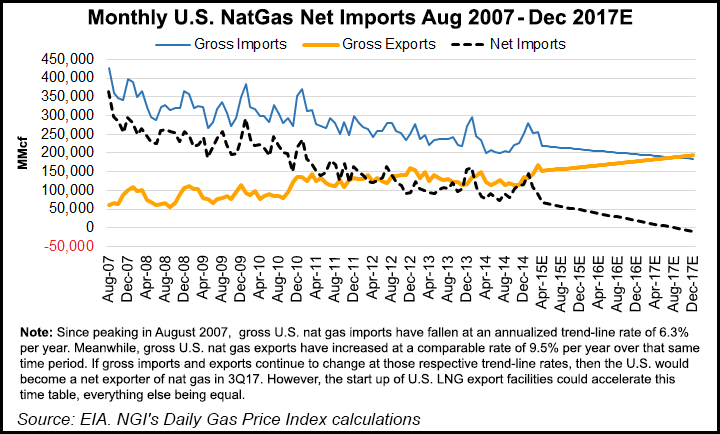Cove Point LNG Foes Go to Court, Again
Environmental groups Monday evening filed a motion at the U.S. Court of Appeals for Washington, DC, to stop construction of the Dominion Cove Point liquefied natural gas (LNG) export terminal in Calvert County, MD.

Groups including Chesapeake Climate Action Network and the Sierra Club claim that FERC failed to comply with federal law by not fully examining the safety and environmental impacts of the terminal. The groups are seeking action on the motion by June 17, which is when they said construction of the terminal’s foundation could begin.
It is claimed that a “high volume of combustible chemicals” could be stored at the site, creating a risk for explosions.
The U.S. Department of Energy granted Dominion Cove Point LNG LP final authorization last month to export liquefied domestic natural gas to non-free trade agreement countries (see Daily GPI, May 7). Also last month, several environmental groups filed a lawsuit against the Federal Energy Regulatory Commission over its approval of the project, claiming that the Commission should have prepared an environmental impact statement for the project instead of the less-rigorous environmental assessment.
“Petitioners already have been harmed by project-related construction and need immediate relief to prevent further injury,” the motion filed Monday stated. “While petitioners’ timely motion for a stay languished before FERC for nearly seven months, the Commission issued 28 decisions authorizing Dominion to begin construction.”
Since peaking in August 2007, gross U.S. natural gas imports have fallen at an annualized trend-line rate of 6.3% per year. Meanwhile, gross U.S. natural gas exports have increased at a comparable rate of 9.5% per year over that same time period, according to Energy Information Administration data and NGI calculations.
“If gross imports and exports continue to change at those respective trend-line rates, then the U.S. would become a net exporter of gas in 3Q2017,” said Patrick Rau, NGI director of strategy and research. “However, the startup of U.S. LNG export facilities could accelerate this timetable, everything else being equal.”
© 2024 Natural Gas Intelligence. All rights reserved.
ISSN © 1532-1231 | ISSN © 2577-9877 |
